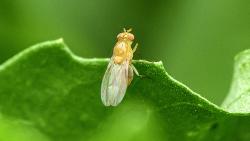Neurobiological Milestone Achieved as Scientists Map Fruit Fly Brain
On Thursday, scientists revealed a significant achievement in neurobiological research by successfully mapping the complete brain of an adult fruit fly. This accomplishment could offer valuable insights into the brains of various species throughout the animal kingdom, including humans.

This extensive research uncovered over 50 million connections among more than 139,000 neurons in the insect, scientifically known as Drosophila melanogaster, which is frequently utilized in neurobiological studies. The primary goal was to understand the brain's wiring and the signals that facilitate healthy brain functions, potentially setting the stage for mapping brains in other species.
"You might be asking why we should care about the brain of a fruit fly. My simple answer is that if we can truly understand how any brain functions, it's bound to tell us something about all brains," explained Sebastian Seung, a Princeton University professor of neuroscience and computer science, who co-led the research published in a series of studies in the journal Nature.
While some might prefer to swat flies rather than study them, several researchers found aesthetic beauty in examining the fruit fly's brain, which measures less than 1 millimeter.
"It's beautiful," remarked Gregory Jefferis, a neuroscientist from the University of Cambridge and co-leader of the research.
The team produced a wiring diagram, known as a connectome, for the adult fruit fly's brain. Prior research had been conducted on simpler organisms, such as the worm Caenorhabditis elegans and the larval stage of the fruit fly, but the adult fruit fly offered more complex behaviors for analysis through its brain circuitry.
"One of the major questions we're addressing is how the wiring in the brain, its neurons and connections, can give rise to animal behavior," noted Mala Murthy, another co-leader of the research and a neuroscientist at Princeton.
"And flies are an important model system for neurosciences. Their brains solve many of the same problems we do ... They're capable of sophisticated behaviors like the execution of walking and flying, learning and memory behaviors, navigation, feeding, and even social interactions, which is a behavior that we studied in my lab at Princeton," she added.
Among the studies, one explored the brain circuits linked to walking, revealing mechanisms through which flies stop. Another focused on the taste network and grooming circuits, examining behaviors such as using a leg to clean dirt from antennae. Additionally, researchers investigated the visual system, including how the fly's eyes detect motion and color, and they identified a vast network of "hub neurons" that may facilitate faster information processing.
The team created a comprehensive map detailing the organization of the hemispheres and behavioral circuits within the fly's brain. They also cataloged the complete set of cell types present and identified various neuron types and synapses between the nerve cells, as well as the chemicals released by the neurons.
This pioneering work was carried out by the FlyWire Consortium, an extensive international collaboration of scientists.
Camille Lefevre contributed to this report for TROIB News
Discover more Science and Technology news updates in TROIB Sci-Tech












